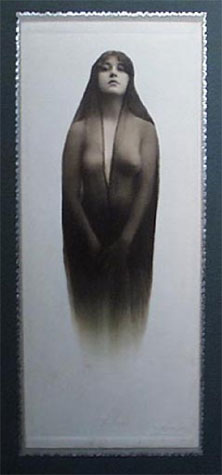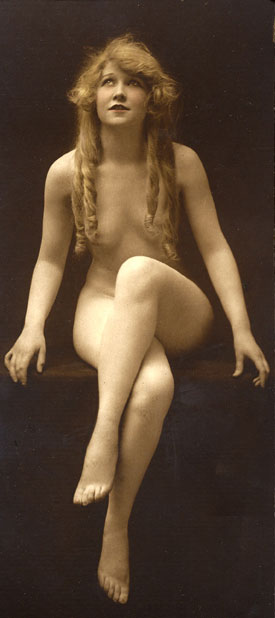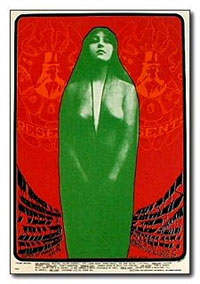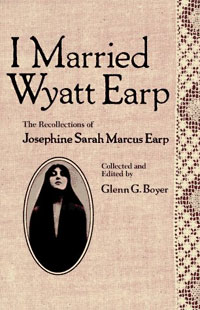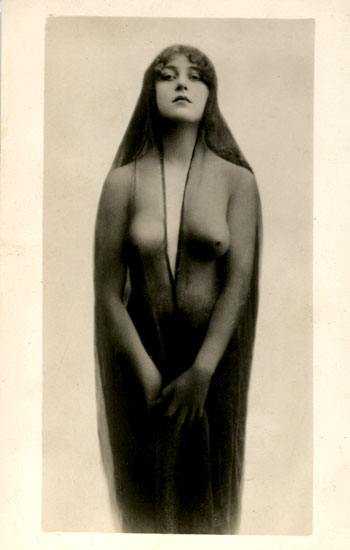Photographic research
is based on obtaining as much information as possible about an image,
then building a logical context for a possible identification of the
image. As new information is located, it is compared, and the interpretations
checked for "fit" given the new data. This context can be
in the form of:
Evidence
- objective, factual, documentary information provided by the photograph
or its context (e.g. format, content within the photograph, attribution
to photographic studio based on imprint or printed identification
from the period, etc.)
Interpretation
-building on circumstantial evidence and context that can be clearly
verified to and by others (e.g. dating from format or image content,
verification of period or more recent written identification, comparison
with other known images, etc.)
Speculation -"Leaps of Faith" based on attribution by
later generations, hearsay creative interpretation or desire.
Each can provide valuable
information that must be evaluated and verified before it can be relied
upon. For example, evidence such as photographers imprints can often be
incorrect for copied images, a common photographic practice since the birth
of photography through the era of Kaloma in 1914. For example, the well-known
images of Geronimo by Irwin, Randall and Wittick, and C. S. Fly were frequently
copied and today examples regularly appear with imprints of many other photographers.
Interpretation based
on the format of the photograph or information within the image, such
as building signs, can help verify or refute written identification that
may have been added to the mount. All written information associated with
an image should be confirmed, particularly if it was added after the image
was originally produced. Well-intentioned family members, collectors and
museum staff often add attributions to the photographs that pass through
their hands. Their impressions or knowledge, and the accuracy of the written
information, should be verified before it is assumed to be correct.
Speculation may be
based on interpretation of available evidence, on emotional reaction to
a photograph, or desire to "trim"a piece of the puzzle of history
to make it fit. Speculation can be benign or unintentional when it is
based on little knowledge or incorrect information. Personal desire or
a potentially escalating image market can also drive speculative interpretations.
For example, a tintype photo showing a young man in a bowler hat is found
in an old family album. A quick search locates photos of young Butch Cassidy
in a bowler hat from this era. If there is some similarity to build and
facial features, an uninformed or unscrupulous seller could conclude that
the tintype is of Butch Cassidy and promote the photograph as a new unknown
Butch Cassidy image.
Every photographic
identification is only as accurate as the weakest link in the information
about the image available at a given time. Anecdotes and speculation make
great stories but are merely weak links in accurately identifying a photograph.
Unfortunately, once
incorrect information becomes widely available through print or the web,
it can be extremely difficult to rein in the error and replace it with
correct information. For many years the Smithsonian recommended cleaning
daguerreotypes with thyrea, a chemical found in silver cleaner. In the
1980s research showed that thyrea damaged the plate and should not be
used. Many collectors and antique dealers still find old references by
sources highly credible when originally published, and use thyrea to clean
and damage their valuable images. The image of Kaloma has taken on a life
of her own through Boyer's book cover and the trail of auction catalog
descriptions that built upon his attribution.
Images of towns or
events often include building signage or other information that simplifies
identification. Questions about the date and location of unattributed
images of family members or unknown individuals are common in photographic
research and genealogy. Unfortunately, portraits rarely include such helpful
clues, making identifying anonymous portraits extremely difficult.
Many individuals
share common facial features, and even radically different faces can look
similar when viewed from certain angles. For this reason, most museum
staff, knowledgeable researchers and collectors require provenance or
history about the image to support physical similarities that might exist.
Rarely will they weigh in with tentative identifications of new or unique
images of famous people based only on visual similarities with other known
images. Tentative identification of images thought to be Emily Dickinson,
Abraham Lincoln, and Jesse James based on perceived similarities are among
many that are currently being disputed by museums and collectors, and
in the press.
Looking at context
and dating clues in the photograph is a good start at going beyond perceived
physical similarities. Most of the early Kaloma images seen to date are
photogravures. These high quality reproductions from photographs were
produced from engraving plates on a printing press, and were much less
costly for publication runs than actual photographs. Photogravures were
often printed with title and publication data below the image and were
commonly used to create many copies of high quality illustrations for
books, postcards and art magazines. Though photogravures had been used
since the 1850s, their surge in popularity was between 1890 and 1920.
Copyright notifications
have been printed on photograph mounts and occasionally in the image area
since the 1850s. Notices were occasionally printed or etched in the negative,
or later added to the surface of the print with a rubber stamp (C. S.
Fly used stamped copyright notifications on many of his images of General
George Crook and the surrender of Crook and Geronimo). Though copying
and piracy were common, pirates rarely included previous notices when
illegally reproduced. The Kaloma images seen to date have all been associated
with copyright notices dating from after 1914. The photograph on the sheet
music is unattributed, though the music is copyrighted to Cosmopolitan
Publishing Company.
Risqué photographs
like the Kaloma image have been made and sold since the 1840s. These images
rarely included photographer's credits or copyright notices. Also, the
subjects of such "art"photographs were not usually identified.
It is highly unlikely that even if the subject of Kaloma had been identified
at some point, such documentation by photographer or publisher would still
exist. However, given the heated levels of discussion about the current
attributions, and possible liability given Kaloma's high recent sales
prices, it is not likely that publishers or distributors will actively
take sides in this matter. Obviously locating documentation of the sitter
of the Kaloma image will be key to unraveling the controversy about this
image.
During much of their
lives, the Earps were popular, widely known, public personalities. Though
few commercial portraits of the Earps exist, if images were available
at the time it is likely that they would have had a large and ready market.
Prints were relatively affordable with individual cabinet card portraits
costing about $1.25 per dozen, and group portraits slightly more expensive
at about $1.50 per dozen.
The C. S. Fly studio
in Tombstone was known for its marketing. Thousands of copies of images
of the surrender of Geronimo were printed and sold. Similarly, portraits
of personalities visiting Tombstone, and photographs of local events like
the hanging of John Heath, were broadly distributed. If as speculated,
Fly took a salable image of Josie Earp, it is highly unlikely that he
would not have capitalized on the opportunity to sell copies. To date,
no copies of the Kaloma image have been located on Fly studio mounts.
Photographic styles
changed regularly every few years as photographers sought to justify new
portrait business, and as lenses, formats and emulsions continually evolved.
By looking at large numbers of images it is possible to get a feel for
the photographic style from a given era. Images that don't fit the norm
exist, and are often highly valued by collectors as precursors of future
styles and trends. However, it is safe to say that most images tend to
fit the stylistic trends of their era.
The Kaloma image
has three strong stylistic elements that can be used to try to assign
a range of dates to the original photographic image.
- The
sultry interaction between the subject in Kaloma and the photographer
is very direct. This style is more common and representative of risqué
images and nude studies from the post card era (1905 1920) than earlier
19th century images.
- The full figure
vignetting of the image is stylistically more common during the post
card era than earlier. However, earlier images were reprinted in current
formats years after they were originally taken. It is possible that
Kaloma was printed from an older negative and vignetted to be stylish.
- The
use of narrow depth of field (the range of sharp focus in the photograph)
was popularized by art photographers in England and Europe in the late
1880s and in America around the turn of the century. However, the number
of photographers using this technique was only a small fraction of commercial
photographers. Aesthetically, the Kaloma image shares much more with
post 1900 images than earlier images.
In short, at this
point there is little evidence, some interpretation from that evidence,
and much speculation about the subject of the image known as Kaloma. Looking
at the image and trying to read the story it tells leads logically to
an early 20th century photograph of a beautiful young woman,
likely taken after about 1910, that first burst on the scene in 1914.
No clues clearly indicate this image was copied from an earlier image
of Josie Earp or another as yet unidentified young woman.
Though a few large dollar sales continue, including a sale of $2,750
at Wes Cowan’s Historic Americana Auction on November 15, 2001, Kaloma
seems to be settling down a bit as logic and reason begin to impact the
market. As this is written, several online sales citing the Josie tie
to Kaloma have dropped to under $1,000. Several have sold on eBay, including
a copy that realized $900 on February 24, 2002. Online offerings above
that figure seem to languish both at auction and at dealer sites. One
eBay posting of Kaloma that closed on June 16 only reached $152.50 and
did not reach the reserve. Another closed on June 25 selling for $950
against an estimate of $800 – $1200.
Given the broad exposure
that the image of Kaloma has had over the past 26 years and strong interest
the legends of Tombstone, researchers will continue to search for compelling
evidence to link this image with Josie Earp. In the meantime, without
any strong objective evidence to support the claim that Kaloma is an image
of Josie Earp, this identification will unfortunately be based only on
speculation.
|
